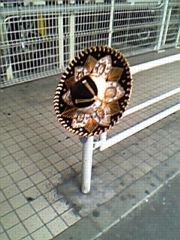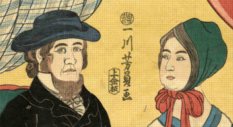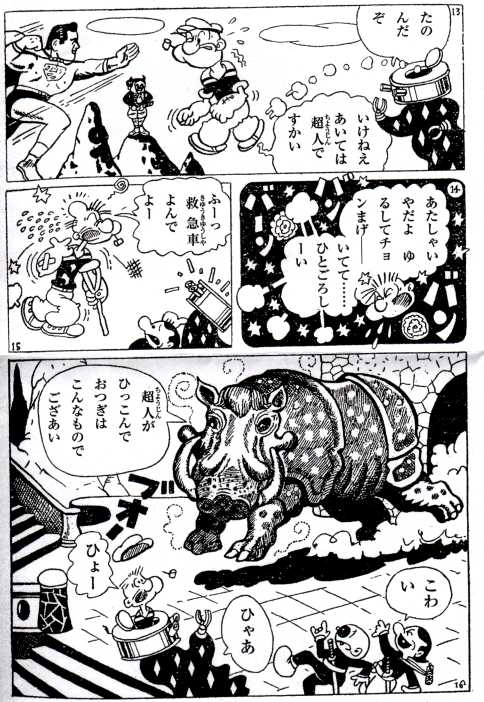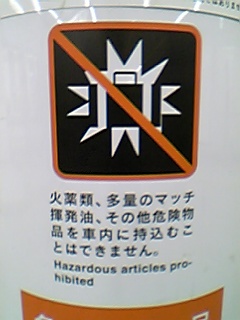What shock! Then, Matt learns-him to read the books in French?
But yes!
There are many practical and noble reasons to seek a reading knowledge of a language. Spite is not one of them, I know, and yet it has driven me here. (Don't even ask.) Returning to the Indo-European fold after so much time pottering around in East Asia is quite a shock. Compared to Japanese, French is... English. With more definite articles.
I'm starting off easy, with Fines Fleurs de L'Humour Français, which has a facing-page Japanese translation and is assez drôle, apart from the occasional wince-inducing use of names like "Roth" and "Lévy" to foreshadow avarice and deceit. My favorite so far:
Le Singe et le Perroquet
Le singe dit:
-- Je grimpe au faîte des arbres; je m'accroche par la queue aux plus hautes branches; je monte à cheval sur des chiens dans les cirques; je fais le mort au coup de carabine; je sais imiter l'homme; je balaie les appartements.
-- Qu'est-ce que c'est ça? interrompt le perroquet. Moi, je parle!
-- Eh bien! Et moi, dit le singe, qu'est-ce que je fais donc depuis un quart d'heure?
(I was sure that the joke would be "Yeah, well I don't do any work for humans, so I guess I win." Pleasant surprise.)
Next stop: Salome! And perhaps one day Madame Chrysanthème, the infamous story that kicked off the first big wave du Japonisme littéraire.
Puis tout ce Nagasaki s'illuminait à profusion, se couvrait de lanternes à l'infini; le moindre faubourg s'éclairait, le moindre village; la plus infime cabane, qui était juchée là-haut dans les arbres et que, dans le jour, on n'avait même pas vue, jetait sa petite lueur de ver luisant. Bientôt il y en eut, des lumières, il y en eut partout; de tous les côtés de la baie, du haut en bas des montagnes, des myriades de feux brillaient dans le noir, donnant l'impression d'une capitale immense, étagée autour de nous en un vertigineux amphithéâtre. Et en dessous, tant l'eau était tranquille, une autre ville, aussi illuminée, descendait au fond de l'abîme. La nuit était tiède, pure, délicieuse; l'air rempli d'une odeur de fleurs que les montagnes nous envoyaient. Des sons de guitares, venant des «maisons de thé» ou des mauvais lieux nocturnes, semblaient, dans l'éloignement, être des musiques suaves. Et ce chant des cigales,--qui est au Japon un des bruits éternels de la vie, auquel nous ne devions plus prendre garde quelques jours plus tard tant il est ici le fond même de tous les bruits terrestres,--on l'entendait, sonore, incessant, doucement monotone comme la chute d'une cascade de cristal....
![[No-sword]](http://no-sword.jp/images/site/no-sword_banner.jpg)









